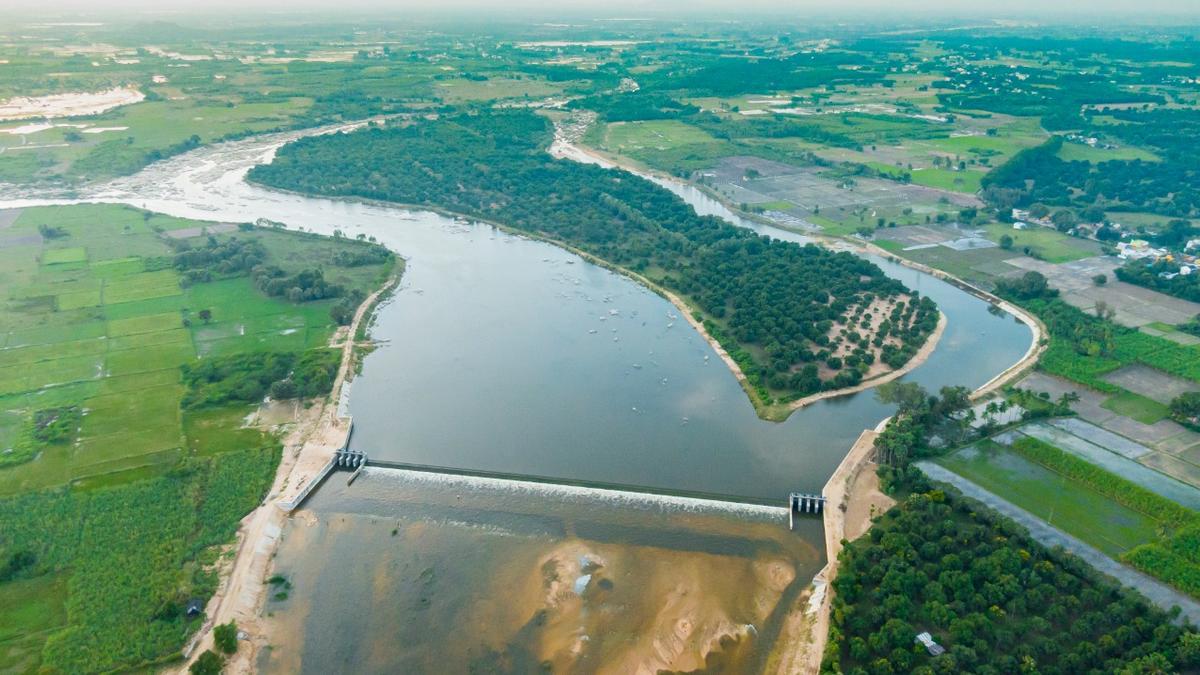
After Illupur check dam, WRD plans to build another one at Lakshmivilasapuram
The Hindu
Water Resources Department plans to construct a check dam across Kosasthalaiyar to recharge groundwater and benefit surrounding villages.
After the success of the check dam at Illupur, upstream of the Poondi reservoir, in recharging groundwater, the Water Resources Department (WRD) is now planning to construct another check dam across the Kosasthalaiyar in Lakshmivilasapuram.
The Kosasthalaiyar, which branches out from Kesavaram anicut, travels for 18 km in Tiruvallur district before reaching the Poondi reservoir, which is one of the major water sources that supply drinking water to the city. In Tiruttani taluk, there aren’t many check dams to control the floodwater in the Kosasthalaiyar and conserve it for the benefit of surrounding villages.
As of now, there are no waterbodies across the river in the stretch between the Kesavaram anicut and Poondi reservoir to store water. Officials of the WRD said the project to build a check dam in the confluence point of the Nagari and the Nandiyar at Illupur has retained floodwater and increased agricultural productivity.
“Farmers in the surrounding 30 villages now cultivate two crops a year instead of just one. The water table does not deplete fast like earlier, and the check dam has helped sustain groundwater level,” an official said.
With the success of the Illupur check dam, the WRD has now submitted a ₹22-crore proposal to the State government to build one more storage structure across the Kosasthalaiyar at Lakshmivilasapuram, about 20 km upstream of the Poondi reservoir.
Officials said the check dam would be able to retain surface water flow for 3 km to 4 km upstream of the river and improve the groundwater level by up to 3 m. Nearly 5,000 people in villages, including Orathur, Ponnankulam, and Lakshmivilasapuram, will benefit from this project.
The new check dam, which will be able to store about 30 million cubic feet of water, will bring significant ecological and economic impact in the region. The water source can be used to meet drinking water, agricultural, and animal husbandry needs. The check dam will be constructed across the 230 m wide river and will have a flood discharge capacity of 55,000 cubic feet per second, officials said.











